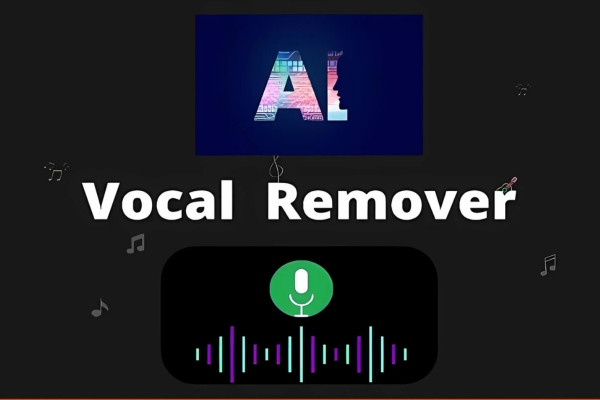In 2025, the music industry is undergoing an exciting transformation—one that’s being led not just by artists and producers, but also by artificial intelligence. Among the many AI-powered tools making waves, AI vocal removers have emerged as a favorite among creators, DJs, content producers, and even everyday music lovers.
These tools allow users to isolate or completely remove vocals from music tracks, creating high-quality instrumentals for karaoke, remixing, sampling, and even live performances. But beyond the novelty, AI vocal removers are reshaping workflows, democratizing music production, and opening up creative possibilities previously locked behind expensive software and years of training.
Let’s explore how this technology works, who’s using it, and how it’s revolutionizing the music scene.
The Rise of AI in Music Production
AI has been a growing presence in music for years—from recommendation algorithms to mastering plugins. But in 2025, its role has expanded dramatically.
What was once reserved for professional studios is now accessible to amateurs and indie artists. Tools powered by machine learning can now analyze entire audio tracks, identify frequencies associated with vocals, and isolate or remove them without significant quality loss.
AI vocal remover platforms like Moises.ai, LALAL.AI, and SplitMySong have become standard tools in the digital music toolbox.
How AI Vocal Removal Technology Works

AI vocal removal is based on source separation algorithms. These models are trained on vast libraries of songs where the vocals and instruments are separated. Over time, the algorithm learns to detect the acoustic features of vocals and distinguish them from the instrumental components.
Here’s a simplified breakdown:
- Input Track: The user uploads a full music file (MP3, WAV, etc.).
- AI Analysis: The AI model processes the file and separates different audio elements—vocals, drums, bass, piano, etc.
- Output Options: Users can download stems (individual components) or a track with vocals removed.
This process takes only seconds to minutes, depending on file size and platform. The result is near-studio-quality output at a fraction of the cost.
Why Artists and Producers Love It
1. Faster Remixing and Mashups
DJs no longer have to hunt for acapellas or spend hours isolating vocals. AI vocal removers let them quickly extract clean instrumentals or vocal tracks for remixes.
2. Budget-Friendly Music Creation
Indie artists without access to studio vocalists can use the technology to create karaoke versions, reference tracks, or experiment with different vocal arrangements.
3. Live Performances and Karaoke
Venues and performers now use real-time AI tools to customize tracks for live shows, background scoring, and interactive karaoke experiences.
4. Sampling Made Easy
Hip-hop and EDM producers can extract clean vocal hooks or instrumentals for creative sampling—legally and efficiently.
Ethical Considerations and Copyright
While AI vocal removers are powerful, their ease of use raises intellectual property questions. Remixing copyrighted songs without permission—even if altered—can still infringe on rights.
Some platforms now embed digital watermarking or require rights verification before processing tracks to ensure fair use. Creators are also encouraged to remix royalty-free music or obtain licensing agreements.
This shift is also pushing music labels to release official stems of songs to encourage legal remixes and fan-driven content.
Case Study: How Bedroom Producers Are Thriving
In 2025, TikTok and YouTube are flooded with remixes made by bedroom producers who rely heavily on AI tools. One viral example is a 19-year-old from Jakarta who used a vocal remover to isolate Billie Eilish’s vocals and create a lo-fi remix that went viral, eventually landing her a contract with a major label.
This is just one example of how accessible music tools are leveling the playing field.
The Future: Real-Time Vocal Removal and Customization
Looking ahead, some platforms are now offering real-time vocal isolation, which can be used in:
- Streaming concerts where fans can mute vocals or instruments as they wish.
- Educational settings where students analyze music layers in real-time.
- Accessibility tools for the hearing-impaired to enhance specific frequencies or isolate voice tracks.
AI-powered customization is making music more interactive and user-centered than ever.
Challenges Ahead
Despite the progress, AI vocal removers still face limitations:
- Complex Tracks: Songs with heavy reverb or layered vocals can yield imperfect results.
- Genre Variations: AI performs better on pop and rock than jazz or experimental genres.
- Processing Limitations: Free tools often have file size or length restrictions.
As algorithms evolve, these barriers are likely to shrink.
Conclusion
AI vocal removers are more than just a tech trend—they represent a paradigm shift in how music is created, shared, and enjoyed. In 2025, both professionals and hobbyists can engage in music production like never before. Whether you’re a DJ, a karaoke enthusiast, or an emerging artist, the tools are now in your hands.
With AI continually evolving, expect even more creative freedom, democratization, and collaborative innovation in music.
Short FAQs
Q1. Are AI vocal removers legal to use?
Yes, but using them on copyrighted music for commercial purposes requires licensing.
Q2. What’s the best free AI vocal remover?
Popular free options in 2025 include LALAL.AI and SplitMySong, with limited features.
Q3. Can vocal removers separate all instruments too?
Yes, advanced platforms let users isolate drums, bass, piano, and more.
Q4. Are AI vocal removers good for learning music?
Absolutely! They help students analyze arrangements and practice with backing tracks.
Q5. Do vocal removers work on live or acoustic recordings?
Results vary—clean studio tracks yield better isolation than live or heavily mixed audio.



